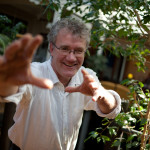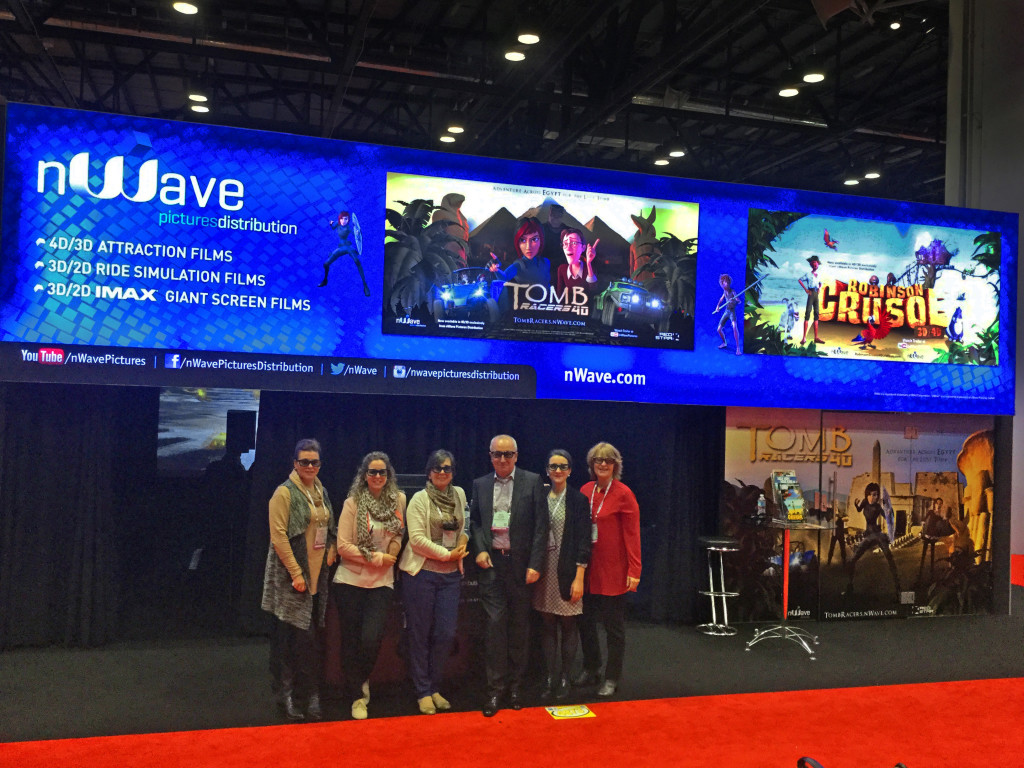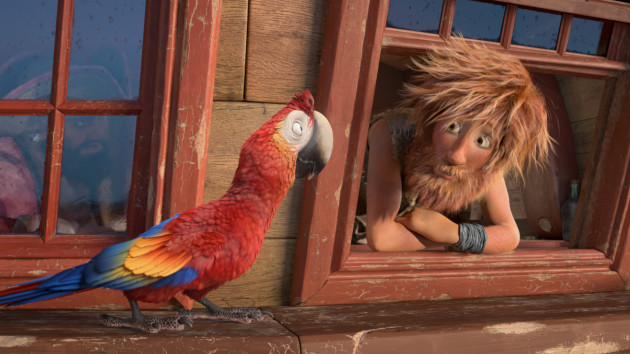nWave steps up to new heights in the cinema world with “The Wild Life” distributed by Lionsgate
Ben Stassen is interviewed by Judith Rubin
[quote]It’s not just about making a long version and a short version. We serve two very different distribution markets, and each of those markets has subcategories. Success in one doesn’t automatically guarantee success in the other, but our track record is good.”[/quote]
[dropcap color=”#888″ type=”square”]B[/dropcap]ased on the classic novel Robinson Crusoe, the new release from nWave Pictures in partnership with StudioCanal Group marks a new level of success for nWave with Lionsgate acquiring US distribution rights to the movie for the mainstream cinema market under the title, “The Wild Life” opening in theaters September 9.
Over the course of 20+ years, nWave founder Ben Stassen has built a reputation for innovation in the business of specialty cinema, producing and distributing content in a variety of formats for museums, visitor attractions, educational markets and most recently, mainstream cinema. The company has challenged traditional models and pioneered new ones, championed digital production to facilitate multi-platform distribution, helped establish a modern vocabulary of 3D cinema and set the bar of quality for 3D and animated moviemaking. nWave has distributed films to more than 12,500 theaters globally (including cineplexes), garnering attendance to its shows of more than 50 million – cineplex numbers alone being over 30 million).
The nWave tree today includes distinct company branches for production, distribution and marketing. InPark co-editor Judith Rubin interviewed Ben Stassen and also spoke to longtime company executives Janine Baker and Eric Dillens for this look at Robinson Crusoe, and the history and future of nWave.
How did the Robinson Crusoe story wash up on nWave’s shores?
I love castaway stories – and they provide good, family-oriented subject matter with good themes. Robinson Crusoe is a classic that lives in the public consciousness – a recognizable IP. Most people know at least the basics, even if they haven’t read the book by Daniel Defoe. It was ideal for our purposes, and this was such a new and original angle – seen from the point of view of the animals on the island where the hero is shipwrecked. It was a real find. Chris Hubble had written the original script on spec. He’s a retired Disney staff writer now in his 70s, and had worked with us before on the script of Sammy & Ray, part of nWave’s Turtle Vision series. I fell in love with it. We worked on it for about a year, reshaping and rewriting to make it our own and combine production of a feature with that of a theme park attraction.

Tell us more about how nWave modernized and repositioned the story.
In this version, the main character is a parrot. And there’s no Friday [the native in the original story who becomes Crusoe’s right hand man]. But as a nod to Friday, the parrot is called Tuesday. We begin on the island before Robinson Crusoe arrives, where Tuesday is a restless inhabitant. He’s like a bored teenager. He wants to see the world. The other animals are complacent, but he’s convinced there’s something better out there. He finds clues here and there in the form of things that wash up on the beach. He has tried to fly away but always returns exhausted.
And Robinson Crusoe’s arrival changes Tuesday’s world?
Yes – one day there’s a big storm on the island, and that night the animals hear strange noises but there is no visibility. In the morning, they see the wrecked ship, and they see Robinson Crusoe and his dog, whom they take for sea monsters. For his own part, Robinson Crusoe is dreading cannibals, and that’s what he mistakes the animals for. So our story and our characters develop out of these wrong first impressions and this clash between two different worlds. The themes are very different from the original story, but then again, they’re not – and they work.
The playful, slapstick comedy of the movie is also quite different from the mostly solemn tone of the book. It has the feeling of classic zany cartoons.
It works – not just for the way we wanted to tell the story but as a valid interpretation of this castaway character trying to survive and adapt, facing challenge after challenge, and failing repeatedly until he succeeds. It’s also characteristic of how we approach cinema and one of the things that differentiates nWave from the mainstream, as we produce movies from our allegorical desert island in Brussels, Belgium. nWave comedies are like sitcoms, as opposed to the typical North American dialog-driven comedy. We try to create a unique world, and our characters exist within that world.
That doesn’t mean there aren’t serious events and even tragic moments in the movie and nWave’s other movies. There are.
nWave and the attractions market – an emphasis on quality
Janine Baker, SVP Distribution & DevelopmentTECHNOLOGY
“What takes us to new heights and places is the growth of technology. Today it’s all about the best digital technology, and that’s moving and changing quickly, all the time. A site simply has to install a system that fits their space and their budget – and today, they have lots of options to choose from. As often as we upgrade our home computers, that’s about how often sites have to upgrade the systems in their theaters. On our end, the quality of content now has to be better than ever because the resolution is better than ever. One reason nWave has been successful for so long is that we work very hard to keep up with that – we’re always looking forward to where the market is going, on a multi-platform distribution level. As a producer/distributor nWave continues to lead successfully in all its markets because Ben made that jump into the features world and insisted on high quality, and because we understand our clients.”LONGEVITY
“Robinson Crusoe can play for 10-20 years in attraction theaters. There are sites that still play Superstition and other nWave titles that have been around since the 1990s. Many of our clients have been with us for 10+ years. We keep up with technology and ahead of it; we listen, we visit, we understand tha each site and each client is unique.”LIBRARY
“nWave introduces at least two new attraction films a year, along with one or two ride films, and one or two giant screen releases. Being in features has not changed our commitment to the attractions market – it has put us in a position to serve it better. Clients stay with us because we have the highest quality product for the family entertainment markets. Our 3D is pristine, the best in the market. We have been called the European Pixar.”
How do you approach production with both distribution platforms – mainstream animated feature, and attraction film – in mind? What are the target markets?
Multiple distribution platforms give us more sources of revenue, and that’s why we’ve always worked this way, even before we moved into features. Digital production has opened things up and even 3D is much simpler to produce – although not all 3D is good 3D.
It’s not just about making a long version and a short version. We serve two very different distribution markets, and each of those markets has subcategories. Success in one doesn’t automatically guarantee success in the other, but our track record is good.
The theme park and educational attraction markets are important markets for us and we offer them a very competitive product. Having a feature-sized budget to work with – although we spend perhaps 25% of what an American studio spends – and the backing of a studio sustains great production values and means we have high-quality digital material from which to extract attraction films. Any new material we create for the attraction films is based on the existing digital assets, so it costs less to produce than if we were starting from scratch. The Robinson Crusoe attraction is 13 minutes long, for 2D, 3D and 4D exhibition in theme parks, zoos and aquariums, science centers and museums. The ecological angle of the story gives it huge crossover potential. [See sidebar for more on nWave and attractions markets.]
Attraction films tend to be part of a park’s new offerings for the season. While they have splashy premieres, they are allowed time to grow throughout the season or the year and build the market. Word of mouth is important. With attraction films, it’s about stimulating repeat visitation to an immersive experience.
The feature distribution model is such that a movie has to succeed when it premieres – it has to have a great opening and first weekend. It’s about the public, the end user. On the features level, we have proved ourselves as well. Initially it was tough. We’re a small company, but our alliance with StudioCanal – which began with their picking up the distribution/sales agency rights of the first TurtleVision feature – was a huge leap. Our output has accelerated from six features in nine years – starting with Fly Me to the Moon in 2008 – to one per year. That’s an output unheard of outside of North America and proves we’re here for the long term. With that plus The Wild Life being distributed by Lionsgate, we have total credibility.
nWave’s Greatest Hits
Source: Eric Dillens, Chairman, nWave Pictures DistributionLONG TERM CLIENTS AROUND THE WORLD INCLUDE: • Europa-Park, Germany • Isla Magica, Spain • OCT Parks, China • Ancol, Indonesia • Tycho Brahe Planetarium, Denmark • Aquarium of the Pacific, Los Angeles • Discovery Cube Foundation, Los Angeles
MOST PIRATED FILMS: • Haunted Mine Ride • Cosmic Coaster
LONGEST RUNNING ATTRACTION FILM
PandaVision (2000) was nWave’s first attraction film and it still runs at Efteling in
the NetherlandsTOP-LEASED RIDE FILMS • Haunted Mine Ride • Glacier Run • Snow Ride
TOP-LEASED ATTRACTION FILMS • PandaVision • Haunted House • Fly Me to the Moon
• TurtleVision • The Little Prince • PiratesFILMS THAT HAVE ACHIEVED CULT STATUS • Haunted Mine • Haunted House • Haunted Castle
Eric Dillens: “The common factor, of course, is ‘Haunted.’ Haunted stories have
a strong, enduring attraction appeal and that is demonstrated by these shows’
continuous popularity over 10-20 years.”INDUSTRY BREAKTHROUGHS • SOS Planet’s success as a pioneering 4D attraction film opened the door for other successful films in this genre. • Dillens: “E3D & Haunted Castle changed the way giant screen clients licensed films. nWave has been the first producer to bring pure entertainment and fun to the giant screen. It started with ‘Thrill Ride, the Science of Fun’ (1997) followed by E3D (1999), ‘Alien Adventure’ (1999) and ‘Haunted Castle’ (2001)” • “Fly Me to the Moon opened the door for the company’s success and growth in the feature film world and gained the attention of partner StudioCanal.” • “Multi-platform distribution model: Ben Stassen’s pioneering strategy of creating a feature and breaking out other versions to distribute through other markets has been so successful that it has been copied by other companies and competitors in the markets of giant screen, 4D attractions and rides.”
Tell us more about working with StudioCanal and Lionsgate and how that has affected your company.
Working with a studio means we have a strong financial partner to bankroll our productions, as opposed to financing on our own. Our staff has grown from 30 to 120 people – 115 of them in Brussels, and the rest on the ground in Los Angeles and Asia. It takes two years to do a film. We start a new one every year, which keeps the animation team busy. We see new proposals coming in every week, and are able to attract first class talent.
We’re very happy about Lionsgate picking up Robinson Crusoe. They’re one of the largest film sales companies in the world. StudioCanal made a deal with their North American distribution unit.
There may be a fair amount of controversy in the initial discussion stages of a project, but once the project is greenlit, they let us have our heads and the process is very smooth. Being relieved of the financial challenge, we can focus on the creative challenge, and we have the means to acquire outside projects, such as our next title, Son of Bigfoot, in addition to developing our own films internally.
We were also able to add co-director Vincent Kesteloot, who started when we had the Sammy and African Safari projects in production at the same time. It’s been great to have him on board. I can still remain the big-picture guy and be involved in the story, while sharing a lot of the day-to-day responsibilities. It is always a very collaborative process: You have to give people room to do what they can do; leave them room to be creative. That’s a key aspect.

Will there be more Robinson Crusoe tales from nWave after this one?
It is part of the plan. In our film, after three years on the island, Crusoe is retrieved by a pirate ship. He thinks at first he’s being brought back to England, discovers he is not and returns to the island, along with Tuesday. In Dafoe’s original story Crusoe lives on the island for 27 years. So there are many more adventures that await.
Doesn’t Tuesday want to join the pirates and see the world?
Our restless parrot discovers the value of what was in his own backyard. They both do. But the movie itself is traveling the world, to theaters everywhere! • • •






